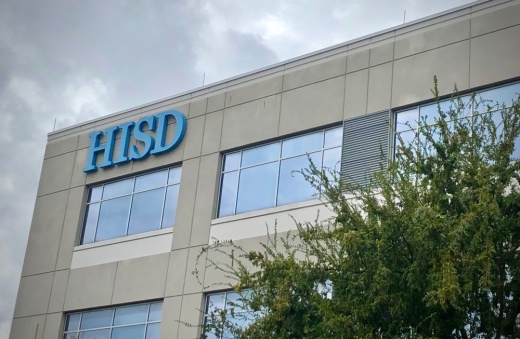Issued in two batches as part of the Elementary and Secondary School Emergency Relief fund, the money will come to HISD only after a spending plan is approved by the Texas Education Agency. HISD submitted its plan in late July and hosted a public meeting July 28 to outline priorities. Elements of the plan are subject to change based on TEA feedback and district needs moving forward.
Here is an outline of some of the highlights from the July 28 presentation.
Teacher compensation
The plan calls for spending $135.91 million on human capitol, including incentives to employees on the district's teacher pay scale, Chief Financial Officer Glenn Reed said.
Teachers who stay with the district will have an opportunity to get a $2,500 recruitment and retention stipend that would be paid out at the end of each semester for the next three school years. In addition, all returning employees will receive a $500 retention stipend annually each September.
If approved by the TEA, the stipends would come to teachers on top of a $2,500 pay raise approved as part of the annual budget process in June. Some trustees have pressed for paying teachers more, citing the importance of remaining competitive with other school districts in the region.
Learning loss
The district wants to spend $127.84 million on programs to help students in the subjects of math, reading, social studies and science, as well as with literacy.
Chief Academic Officer Yolanda Rodriguez said remote learning affected many students negatively, leading to an increased number of students in need of urgent intervention in literacy, reading and math. Meanwhile, remote science students were limited in their opportunities to do hands-on, inquiry-based labs.
One of the core priorities is to implement a new districtwide phonics program for students in kindergarten through third grade, which Rodriguez said would streamline phonics instruction. All pre-K classrooms would also be outfitted with literacy kits, and all pre-K students would receive literacy backpacks.
Professional development will be provided to teachers in kindergarten through fifth grade with the purpose of accelerating the recovery of math skills. Libraries at every campus will also be brought up to state standards, a process that involves acquiring culturally relevant and social-emotional learning resources.
Special education
HISD was already looking to improve outcomes among special education students prior to COVID-19, and the TEA has identified areas of concern in the academic achievement in reading, science, social studies and writing, Rodriguez said.
Since the coronavirus pandemic, the number of evaluation caseloads being conducted by diagnosticians has increased from 51 per school year to more than 65 per school year, Rodriguez siad.
About $50 million in funding would help the district hire 120 additional teachers, 15 additional speech and language pathologists/therapists and 15 additional diagnosticians. It would also go toward a $500 recruitment and retention stipend for special education teaching assistants as well as professional development.
Social-emotional learning and wraparound services
On top of supporting students in the academic needs, HISD is also looking to support them when it comes to their emotional health and mental health, said Rick Cruz, chief strategy and innovation officer. In the wake of the pandemic those endeavors are more important than ever, he said at the July 28 meeting.
Among the top priorities is to address the fact that 85 HISD campuses do not have a licensed counselor or social worker on staff, Cruz said.
"As we think about the people who are on the ground supporting students, that presents a major challenge when we already had significant levels of trauma and mental health needs, and now we have more than probably ever," he said.
The district plans to spend just under $60 million in this arena, which would help hire up to 150 licensed counselors and social workers.
“It’s going to be a task to identify and hire these individuals, but we’re excited," Cruz said. "We’re going to aim to make sure that our students have access to people in the campuses to support them.”
Funds would also help expand the HISD crisis team, a central team that goes to campuses to do crisis counseling and coaching for students, staff and families.
Another $61.62 million will be spent on wraparound services, which includes funding to have at least one dedicated wraparound specialist at each school during the 2021-22 school year. Those specialists help connect students and their families to a variety of resources and programs, often with the help of community partners, to address needs that could otherwise interfere with a students' ability to learn, Cruz said.
Other needs
The district is looking to spend $80 million on technology support for students, a plan that includes providing laptops for students with focus on digital learning in middle schools; providing internet hotspots for mobile instruction; and purchasing additional iPad carts and desktop devices for labs in elementary and secondary campuses.
About $34 million would go to facilities, including air purification systems for all campuses.
Learn more about these and other areas of the district's plan—which covers fine arts, English learners, student re-engagement and college readiness—on the HISD website.





